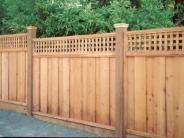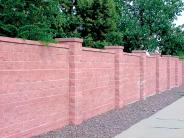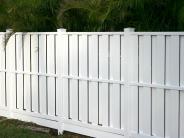- Community
-
- About Sherwood Sherwood Heritage Center Chamber of Commerce Marjorie Stewart Center Sherwood Center for the Arts Sherwood YMCA Family Resources
- Events and Activities City Calendar Library Events Community Events Event Permits Monument Posting Request Community Meeting Rooms Recreation Parks and Trails Directory Recreation Programs Sherwood Fieldhouse
- Community Field House Sherwood Demographics Sherwood School District Sherwood Youth Sports Utilities Volunteer Opportunities Highway 99 Pedestrian Crossing Public Safety Police Tualatin Valley Fire & Rescue
-
- Business & Development
- Government
-
- City Council Boards and Committees Urban Renewal Agency Agendas and Minutes Municipal Code Public Records
- Building City Attorney City Manager Code Compliance Community Development Community Services Economic Development Emergency Management Engineering
- Finance Human Resources Library Municipal Court Parks & Recreation Planning Police Public Works Utility Billing
-
- Online Services
-
- Job Opportunities Utility Billing Alerts & Notifications Email Subscriptions Sherwood Flash Alert Police Flash Alert Events and Meetings Agendas and Minutes Calendar
- Contact the City Submit a Request or Concern City Offices Municipal Code Documents and Forms Documents and Reports Forms and Applications
- Social Media
-
Fences
Fences can create a sense of privacy, protect children and pets, provide separation from busy streets, and enhance the appearance of property by providing an attractive landscape. The following standards apply to walls, fences, hedges, lattice, mounds, and decorative topers. They do not apply to vegetation, sound walls, or landscape features up to four feet wide and at least twenty feet apart.
Residential zones
- Front yard fence: allowed up to 42” high
- Side/ rear yard fence: allowed up to 6’ except fences that are adjacent to public pedestrian access way/ alleys cannot exceed 42” (landscaped buffers can be up to 3’ wide between fences and access or alley.
- Rear flag lots: there must be at least a 42” high fence that separates it from the abutting properties.
- Street side/Corner lots: a fence can be built in the corner side yard, five feet away from the sidewalk. The clear vision standards must be met.
- See Fence Code Illustration 2020 below
No chain link fencing is allowed in the front yard.
Non- residential zones
Fences up to eight feet tall as long as the clear vision standards are maintained. Hedges can be up to twelve feet tall.
For all zones
Fences must be structurally sound and maintained in good repair. A fence may not be propped up in any way from the exterior side.
Fences on street side/corner lots may not be closer than five feet back from the sidewalk along the street side/corner–side yard. The clear vision standards must also be maintained.
The height of a fence or wall is measured from the finished grade measured six (6) inches horizontally from the fence to the top of the fence including any lattice or decorative work.
A fence may be open, solid, wood, metal, wire, masonry or other materials and includes lattice or other decorative toppers. Please check with your homeowners association before erecting your fence as they may be more restrictive regarding the type of fence allowed.
There is no permit required for a fence. If constructing a fence on top of a retaining wall, please remember the height of a fence is measured six inches horizontally from the base of the fence.
Fence Definitions:
Fence: A freestanding structure that provides a barrier between properties or different uses on the same property and is generally used to provide privacy and security. A fence may be open, solid, wood, metal, wire, masonry or other materials and includes lattice or other decorative toppers.
Wall: A solid structural barrier that is not intended to alter the grade.
Retaining wall: A solid barrier that provides a barrier to the movement of earth, stone or water and is used to alter the grade.
Sound wall - An exterior wall designed to protect sensitive land uses including parks, residential zones and institutional public zones from noise generated by roadways, railways, commercial and industrial noise sources.
Landscape feature: A trellis, arbor or other decorative feature that is attached to or incorporated within the fence.
Hedges: A line of closely spaced vegetation specifically planted and trained in such a way as to form a barrier to mark the boundary of an area or visually screen an area. Hedges can be up to eight feet tall.
For more information look in Section 16.58 of the Sherwood Municipal Code.
Click any thumbnail image to view a slideshow







